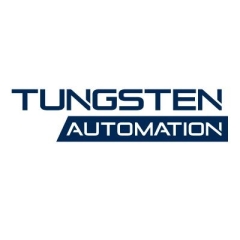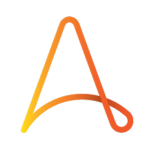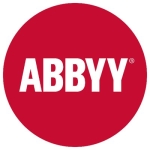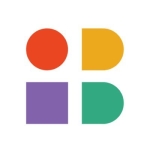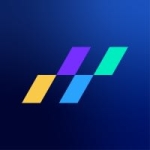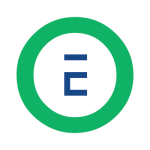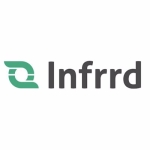What is our primary use case?
I'm using a Kofax document extraction application, however, it doesn't only do that. It can also capture some stuff and can export and extract data from documents.
One use case would be that we develop the application and deploy it on the server, and then we get users to process whatever that we develop for them depending on the type of document that they're using. For example, if they have to extract data from proof of residence, you'll get a name, address, et cetera, depending on the client. You can scan through a document using this application and once they've scanned through a document, there are different queues that the document goes through. The first one will be the scan queue and then the next will be document review where they're reviewing the document now structured with current data.
We've preconfigured everything on the server. Once they confirm everything, they can move into the next queue, validation. Validation is making sure that the data is valid and all the mandatory fields are there or you cannot submit. The ID number on the document, that's mandatory, the user has to enter that. The tool checks those kinds of things. And, depending on the document, they have to also make some calculations.
We used to work with statements as well, bank statements, and we would perform calculations. That's the validation.
The export is the last part. Once they submit the validated documentation, a user can move now to export. We would also call in some services to come and then check data and then compare it and then populate it. You can export it as a PDF or text. Some data is exported to IBM Content Manager or Content Navigator. Kofax itself has types of export connectors. Depending on the client, we will integrate with different solutions.
How has it helped my organization?
Being able to extract data from documents is great.
The capability of this tool is great. It can work like your C Sharp, your Java, et cetera. We had to replace something that was developed using rebe.net and we built it using TotalAgility for a call center department. For example, if a bank was dealing with a lost or stolen card, the client would provide details, and we would save them in a PDF. We had a two-step system where we could take the PDF we created and deploy it into another system for extraction and export. It made everything very easy.
What is most valuable?
It has its own monitor, where it monitors all the Kofax servers. This is great for monitoring. Other solutions don't offer this. If there are web services running or other things, it will monitor for that.
It has different types of export connectors where it exports to. Depending on the client, it integrates with a lot of systems out there.
There are also already a lot of built-in features, meaning you don't have to install and integrate many third-party plugins. It has a lot of its own stuff.
Now it has an OCR, optical character recognition, engine where it can extract data from the document.
You can deploy the CSV file and put it within Kofax, and then it'll search from the CSV file as well. For example, let's say you have a long list of names. It's integrated with scanners so it's easy to find the data you need.
They have cloud platforms you can use as well.
They really are trying to reinvent themselves all the time.
The initial setup is easy.
What needs improvement?
Sometimes there isn't enough accuracy when it comes to extracts. A user has to validate the data to make sure that the data is correct. If that step is improved, then it's perfect. We need a level of hundred percent on the extracted data. Right now, we need a user to validate and make sure that the data is correct, which is an extra step and takes some time.
This is especially true if the documents we are extracting from are handwritten. A's sometimes read as 8's, for example.
For the most part, they have so many different aspects right in Kofax, I can't speak to if there are any missing features.
For how long have I used the solution?
I've used the solution since 2013.
What do I think about the stability of the solution?
You do need to keep it updated so that you can avoid dealing with bugs and things of that nature.
I do find the stability to be quite good. It's been pretty easy to maintain.
What do I think about the scalability of the solution?
We're a small company. Maybe only seven people really use it. We do use it on a daily basis.
It's pretty easy to scale.
How are customer service and support?
We have been in touch with technical support in the past. They were quite helpful and we are satisfied with the level of service on offer.
How was the initial setup?
It's easy to set up the solution. It's not an overly complex process. It does depend on the level of experience a user has, however, I found that it was pretty quick to learn. The amount of time it takes to deploy also depends on the scope of the project. Sometimes, it can take a while.
In terms of maintenance, they keep on delivering new versions of Kofax. If you are using an older version, you find that you come across issues. Maybe using an older version, they will tell you that they no longer support it. If you log an incident with Kofax directly, they will tell you that they no longer support it or not and you may need to upgrade. You might find that the application is not performing as it's supposed to if you do not maintain it by updating it.
What's my experience with pricing, setup cost, and licensing?
Everything is included under the license.
It's a bit expensive. We were using TotalAgility at one of South Africa's biggest banks, and we had to use a tool or an application that is a Kofax competitor, and their license was a bit cheaper. The manager there said that the Kofax licenses are expensive compared to the competitor. However, we do see the quality it brings. We prefer to pay more for Kofax as we see its value.
What other advice do I have?
We are a Kofax partner in South Africa.
I would recommend the product depending on the type of service that you want to get. From my experience, there are other products that are like TotalAgility, however, for me, it's the best product based on the interface configuring, which is quite simple. I've used other products and it's a bit complicated to get something that's so simple - which is what you get when using TotalAgility.
I'd rate the solution at a nine out of ten.
Which deployment model are you using for this solution?
On-premises
Disclosure: My company has a business relationship with this vendor other than being a customer: Partner

